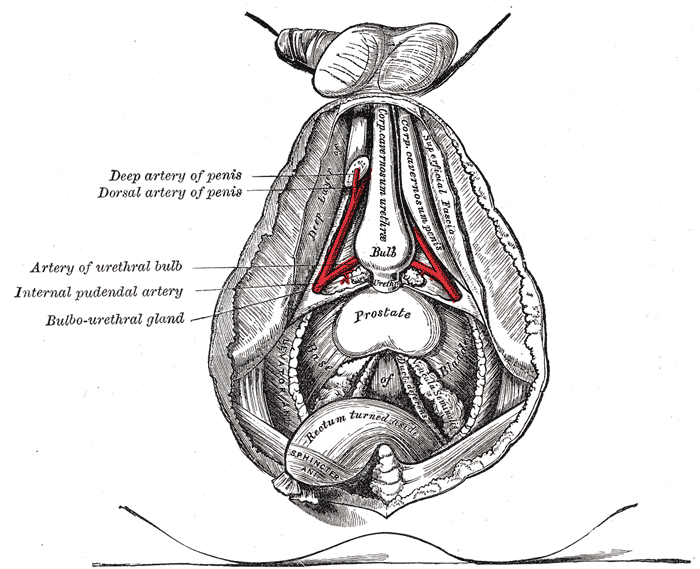[1]
McNeal JE. Anatomy of the prostate and morphogenesis of BPH. Progress in clinical and biological research. 1984:145():27-53
[PubMed PMID: 6201879]
[2]
Aaron L, Franco OE, Hayward SW. Review of Prostate Anatomy and Embryology and the Etiology of Benign Prostatic Hyperplasia. The Urologic clinics of North America. 2016 Aug:43(3):279-88. doi: 10.1016/j.ucl.2016.04.012. Epub
[PubMed PMID: 27476121]
[3]
Cai Y. Participation of caudal müllerian mesenchyma in prostate development. The Journal of urology. 2008 Nov:180(5):1898-903. doi: 10.1016/j.juro.2008.07.025. Epub 2008 Sep 17
[PubMed PMID: 18801537]
[4]
Kellokumpu-Lehtinen P, Santti R, Pelliniemi LJ. Correlation of early cytodifferentiation of the human fetal prostate and Leydig cells. The Anatomical record. 1980 Mar:196(3):263-73
[PubMed PMID: 7406220]
[5]
White CW, Xie JH, Ventura S. Age-related changes in the innervation of the prostate gland: implications for prostate cancer initiation and progression. Organogenesis. 2013 Jul-Sep:9(3):206-15. doi: 10.4161/org.24843. Epub 2013 May 14
[PubMed PMID: 23872639]
[6]
Sun F, Sun X, Shi Q, Zhai Y. Transurethral procedures in the treatment of benign prostatic hyperplasia: A systematic review and meta-analysis of effectiveness and complications. Medicine. 2018 Dec:97(51):e13360. doi: 10.1097/MD.0000000000013360. Epub
[PubMed PMID: 30572440]
Level 1 (high-level) evidence
[7]
Lefaucheur JP, Yiou R, Salomon L, Chopin DK, Abbou CC. Assessment of penile small nerve fiber damage after transurethral resection of the prostate by measurement of penile thermal sensation. The Journal of urology. 2000 Oct:164(4):1416-9
[PubMed PMID: 10992425]
[8]
Singapore Urological Association Male Lower Urinary Tract Symptoms/Benign Prostatic Hyperplasia Guidelines Committee 2015. Singapore Urological Association Clinical Guidelines for Male Lower Urinary Tract Symptoms/Benign Prostatic Hyperplasia. Singapore medical journal. 2017 Aug:58(8):473-480. doi: 10.11622/smedj.2017082. Epub
[PubMed PMID: 28848988]
[9]
Cuzick J, Thorat MA, Andriole G, Brawley OW, Brown PH, Culig Z, Eeles RA, Ford LG, Hamdy FC, Holmberg L, Ilic D, Key TJ, La Vecchia C, Lilja H, Marberger M, Meyskens FL, Minasian LM, Parker C, Parnes HL, Perner S, Rittenhouse H, Schalken J, Schmid HP, Schmitz-Dräger BJ, Schröder FH, Stenzl A, Tombal B, Wilt TJ, Wolk A. Prevention and early detection of prostate cancer. The Lancet. Oncology. 2014 Oct:15(11):e484-92. doi: 10.1016/S1470-2045(14)70211-6. Epub
[PubMed PMID: 25281467]
[10]
Vermassen T, Van Praet C, Poelaert F, Lumen N, Decaestecker K, Hoebeke P, Van Belle S, Rottey S, Delanghe J. Diagnostic accuracy of urinary prostate protein glycosylation profiling in prostatitis diagnosis. Biochemia medica. 2015:25(3):439-49. doi: 10.11613/BM.2015.045. Epub 2015 Oct 15
[PubMed PMID: 26526330]
[11]
Sathianathen NJ, Konety BR, Crook J, Saad F, Lawrentschuk N. Landmarks in prostate cancer. Nature reviews. Urology. 2018 Oct:15(10):627-642. doi: 10.1038/s41585-018-0060-7. Epub
[PubMed PMID: 30065357]

